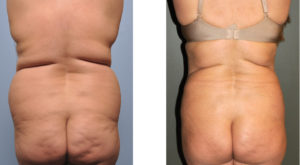
A recent report from the University of Colorado done by plastic surgeons and published in the latest issue of Obesity News has investigated this very liposuction issue. The study involved 32 healthy, non-obese women who were in their thirties. Among the study group, 14 women underwent liposuction of the hips and thighs while the other 18 women were promised a discount in price for the procedure if they would postpone undergoing the surgery and act as the control group for the study. In addition, all of the study participants were asked not to make any lifestyle changes for the duration of the study.
For the study, measurements were taken from each of the women in the study at six weeks, six months and one year to measure their fat thickness and the distribution of fat. Their results showed that after six weeks, the liposuction patients had lost a total of 2.1 percent of fat, while among the control group, the total fat loss was only 0.28 percent. However, after one year, the difference in fat loss was no longer significant. In addition, the fat that returned to those women having undergone liposuction procedure did not reappear in the women’s thighs. Instead, it appeared to be to the upper abdomen and around the shoulders and arms.
What do this study mean? I think there are several insights that the rarely studied long-term results of liposuction demonstrates. First, I applaud the study investigators for putting in the time and effort to complete the study. No one has really done it before so they should be commended. However, it is a small study so the findings are not absolute scientific fact and it needs to be replicated by other investigators. It is highly suggestive but not yet proven. Secondly, it shows that the return of fat is highly possible and patients needs to understand that liposuction may not be a permanent cure. If one doesn’t protect their investment by lifestyle changes and keeping a stable weight, the results will only be temporary. There is a reason the fat is there to begin with and the body is prepared to defend it, so don’t encourage what the body naturally wants to do. Third, fat cells can and do replicate throughout life when stimulated. Why they get turned out is not always well known but protecting its cell count may be one of them.
The most intriguing observation from the study is that the women didn’t regrow new fat cells in their thighs. Why would this be and why the propensity to go elsewhere? Perhaps liposuction damages the fat bed and subcutaneous space so that the scar makes it harder to regrow. While this phenomenon may be true for the thighs, is it the same for any area that undergoes liposuction? I suspect that different fat areas in the body respond differently.
Interestingly, the women in the study who had liposuction were happy even though there was fat redistribution. They had hated their hips and thighs and just wanted that fat gone. As for the women in the control group, when the study ended and they knew the results, more than half still chose to get liposuction. When people have annoying fat problems, they appear prepared to accept the potential tradeoffs of fat reaccumulation and redistribution.
Dr. Barry Eppley
Indianapolis, Indiana


